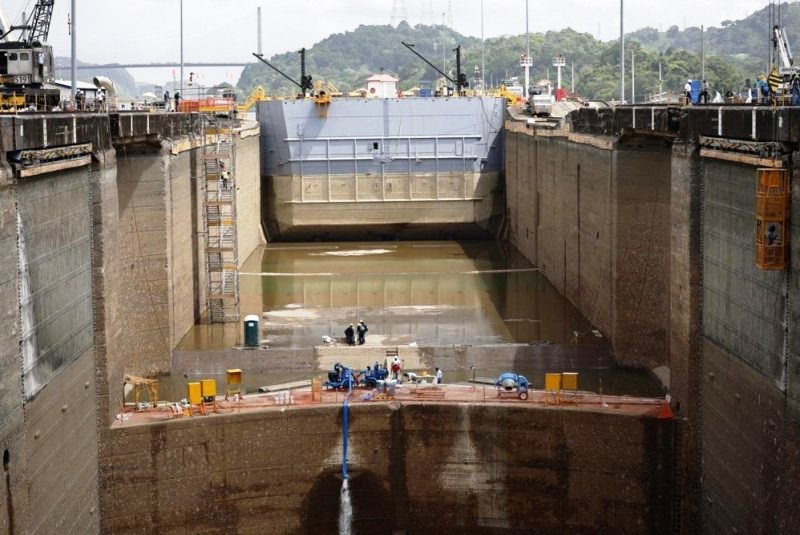The Suez Canal’s Traffic has collapsed while the Panama Canal’s Traffic Rose by 10.2% as an Alternative
People work on reconditioning and preventive maintenance in a dry chamber at the Pedro Miguel Locks of the Panama Canal in Panama City, Panama

The Red Sea risks and the rising tide of Maritime Insurance opportunities involves navigating turbulent waters. The Red Sea has become a flashpoint for global supply chain fragility, as Houthi attacks and geopolitical tensions disrupt shipping routes, drive up insurance costs, and reshape maritime logistics. For investors, this crisis presents a dual opportunity: capitalizing on surging demand for marine insurance and the strategic reallocation of shipping assets to circumvent danger zones.
The Shipping Crisis: Rerouting Costs and Strategic Shifts
The Bab al-Mandab Strait and Red Sea have transformed into war zones, forcing vessels to detour around the Cape of Good Hope—a journey adding 4,000–6,000 miles to Asia-Europe routes. This rerouting has increased transit times by 30–50%, pushing Asia-Europe container rates to $5,500 per FEU by early 2025, double typical levels. The Suez Canal’s traffic has collapsed, with transits dipping below 100 in May 2025, while the Panama Canal’s traffic rose by 10.2% as an alternative. This shift strains global shipping capacity, reducing available vessels by 20% and intensifying competition for cargo space.
The Insurance Opportunity: A Premium-Driven Boom
War risk insurance premiums have skyrocketed, climbing from 0.07% to up to 2% of a ship’s value. Insurers like XL Catlin (XL) and Chubb (CB) are positioned to benefit as companies demand higher coverage for transiting high-risk zones. The sector’s profitability hinges on underwriting discipline and geopolitical risk modeling. Investors should prioritize insurers with robust balance sheets and diversified exposure to global shipping clients.
Rerouting and Tech Adaptations: The Logistics Play
Companies like FreightAmigo—which provides route optimization and cost-comparison tools—are critical to managing rerouting complexities. Their platforms leverage real-time data and predictive analytics to minimize delays and fuel costs. Investors should also monitor logistics tech firms that reduce dependency on the Red Sea. For example, Cargill or Maersk (MAERSK-B), which are expanding their digital logistics networks and alternative port partnerships.
Environmental and Regulatory Risks: A Double-Edged Sword
The crisis has worsened carbon emissions by 40%, as detours increase fuel use. This creates regulatory pressure to adopt greener shipping practices, potentially favoring companies investing in low-emission vessels or alternative energy.
Investment Strategy: Positioning for the Storm
- Marine Insurance Stocks: Buy shares in insurers like XL and Chubb, which are well-capitalized to weather volatility.
- Logistics Tech: Invest in platforms like FreightAmigo or Flexport that optimize rerouting and inventory management.
- Shipping Firms with Diversified Routes: Look to Maersk or CMA CGM, which have invested in alternative routes and digital tools.
- ESG-Driven Innovators: Consider companies developing green shipping technologies to meet future regulatory demands.
Conclusion
The Red Sea crisis is a stark reminder of global supply chain vulnerability. For investors, the turmoil is a catalyst to seek out companies benefiting from elevated risk premiums and logistical adaptation. While geopolitical instability is unpredictable, the demand for insurance and smart logistics solutions is a stable bet. In this turbulent era, the seas may be rough, but the right investments could navigate these waves—and profit from them.





